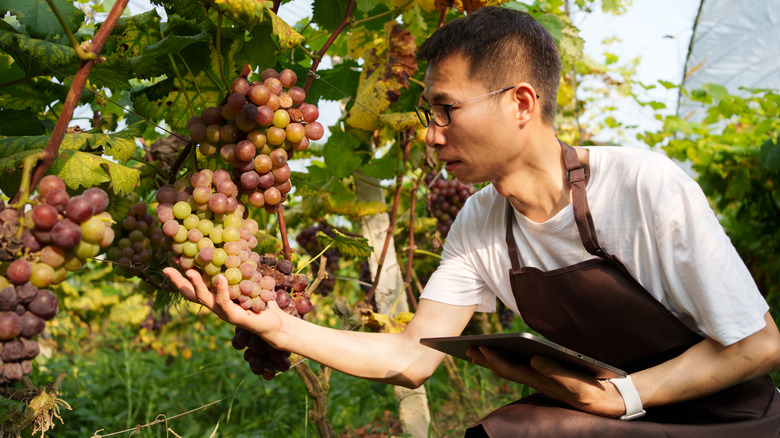
China's Emerging Wine Scene: A Hidden Gem in Asia
Wine enthusiasts often find themselves drawn to the well-known regions of Europe, such as Tuscany or the secret wine areas of Oregon. However, in Asia, China is quietly gaining recognition as a surprising force in the global wine industry. With its diverse landscapes and climates, China is becoming an exciting destination for wine lovers who are eager to explore new horizons.
Historically, rice wine was the favored drink among royalty during the Shang dynasty (1600 to 1050 B.C.), while grape wine production arrived much later during the Han dynasty. Today, China has over 785,000 hectares of vineyards, making it the third-largest country in terms of vineyard area globally. This impressive growth highlights China’s potential as a significant player in the world of wine.
From the arid terrain of Ningxia to the high-altitude terroir of Yunnan, Chinese wines reflect a blend of traditional practices and evolving consumer preferences. The country’s unique geography allows for a wide range of wine styles, from bold reds to crisp whites.
For those planning a trip to China, taking advantage of the visa-free policy offers an excellent opportunity to experience this emerging wine culture. Here are some key regions to consider:
Ningxia
Located at the base of the Helan Mountains and irrigated by the Yellow River, Ningxia is known for its challenging climate. The region’s vineyards are protected by covering them in dirt during winter, a labor-intensive process that results in high-quality wines. Often referred to as the "Bordeaux of China," Ningxia has attracted international attention with wineries like Helan Qingxue and Silver Heights. These wineries produce a variety of wines, including pinot noir, chardonnay, and cabernet sauvignon.
Staying in Yinchuan, the capital of Ningxia, offers access to the Xixia Imperial Tombs, a UNESCO World Heritage site that showcases the architectural and cultural heritage of the Tangut people.
Yunnan
Yunnan, a relatively new player in China’s wine scene, boasts a tropical climate and high altitudes that allow vines to thrive. The region is home to unique grape varieties, including rose honey and French wild. LVMH estate’s Ao Yun vineyards in Shangri-La are known for their complex vintages. Visitors can also sample unique wines made from rose honey grapes in the village of Cizhong.
Exploring Yunnan’s wines can be complemented by visiting Shangri-La’s ancient Tibetan town or hiking to Tiger Leaping Gorge, one of the deepest river canyons in the world.
Shandong
As China’s largest wine-producing region, Shandong benefits from a maritime climate and fertile soil. Wineries like Chateau Changyu Tinlot and Chateau Nine Peaks offer a range of wines, from syrah to chardonnay. Qingdao, with its German architectural roots, provides a charming base for wine tastings.
Visitors can also explore Tai’an’s Dai Temple, a Taoist complex that serves as a gateway to the sacred Mount Tai.
Hebei
Although not as prolific as other regions, Hebei focuses on quality over quantity. The Huailai county is known for its wine industry, with Domaine Franco-Chinoise (DFC) playing a significant role in introducing the marselan grape to China. Changli, known as the "Hometown of Chinese Dry Red Wine," offers a unique selection of dry reds.
Using Beijing as a base allows travelers to enjoy both the city’s rich history and its vibrant wine culture.
Xinjiang
Xinjiang, bordering several Central Asian countries, has a long history of winemaking dating back over 2,000 years. Its continental climate, with abundant sunlight and low rainfall, is ideal for growing a variety of grapes. Tiansai Vineyards in the Yanqi basin have transformed desert land into thriving vineyards, offering a range of wines, including chardonnay and cabernet sauvignon.
Puchang Winery in Turpan is recognized as the region’s first organic vineyard, emphasizing manual and chemical-free winemaking processes. Exploring Xinjiang requires some effort, but the rewards include experiencing the Uyghur culture and cuisine.
China’s wine scene is still in its early stages, but its potential is undeniable. For those willing to venture beyond the familiar, the country offers a wealth of opportunities to discover new flavors and experiences. Whether you’re sipping a glass of cabernet sauvignon in Ningxia or tasting a unique blend in Yunnan, China’s wine regions are waiting to be explored.
